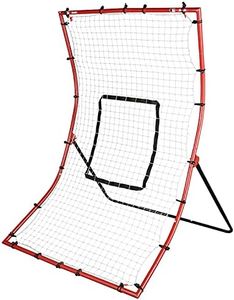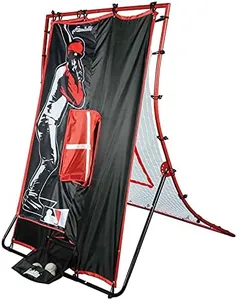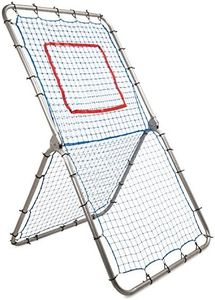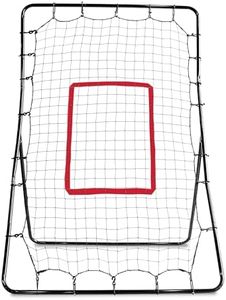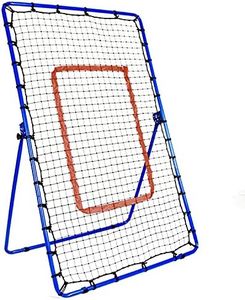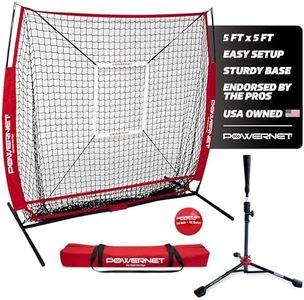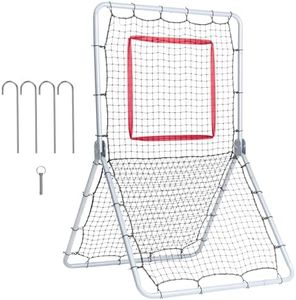We Use CookiesWe use cookies to enhance the security, performance,
functionality and for analytical and promotional activities. By continuing to browse this site you
are agreeing to our privacy policy
10 Best Softball Rebounder
From leading brands and best sellers available on the web.By clicking on a link to a third party's website, log data is shared with that third party.
Buying Guide for the Best Softball Rebounder
Choosing a softball rebounder can really help you practice your skills, whether it's catching, throwing, or fielding. A rebounder is designed to bounce the ball back to you, mimicking real game situations or partner drills. When shopping for a rebounder, it's important to consider your space, the nature of your training, and how durable and easy-to-use the equipment will be for you or others in your household.Size and Surface AreaThe size and surface area of a rebounder refer to how large the net is and how much space it will take up. Larger rebounders offer a bigger target and allow you to practice a wider range of throws and catches, which is good for beginners or solo training. Smaller rebounders are more portable and fit in tight spaces but require more accuracy. If you're practicing in a backyard, make sure to choose a size that fits comfortably. Think about what drills you intend to do and your available space before deciding.
Frame Construction and MaterialFrame construction focuses on the strength and durability of the rebounder's structure. Look for frames made from rust-proof metal, like powder-coated steel, for outdoor use and longer life. Stronger frames hold up better to repeated, powerful throws. Lightweight options may be easier to move but can tip or break more easily. Consider how often you'll use it and if you need something rugged for daily practice or just occasional drills.
Net Quality and TensionThe net's material and how tight it is strung affect how well the ball bounces back. High-quality nets, usually made from weather-resistant nylon or polyester, last longer and provide consistent rebounds. Tighter nets tend to return balls more quickly and forcefully, which is good for advanced skills. Looser nets slow the ball down, which can help beginners get used to catching rebounds. Think about your skill level and desired speed of practice to find the right tension.
AdjustabilitySome rebounders allow you to adjust the angle of the net, changing the trajectory of the ball when it returns. More adjustability means you can simulate grounders, pop flies, and line drives for a more versatile workout. If you're looking to improve all-around fielding skills or want varied drills, go for a model with multiple angle settings. If you're focusing on a specific skill, a fixed-angle option may be enough.
Portability and StoragePortability refers to how easily you can move or store the rebounder. Some models fold flat or disassemble for storage, which is useful if you have limited space or plan to transport it often. Heavier or bulkier options might be more stable, but they take up more room and are harder to move. Think about where you’ll keep the rebounder when not in use and whether you’ll need to pack it away regularly.
Setup and AssemblyThe setup process varies from model to model. Some rebounders are ready to use out of the box, while others may require tools and time to assemble. The easier it is to assemble, the quicker you'll be able to start practicing. If you don't have much experience or patience for detailed setups, look for products that specifically mention tool-free or simple assembly.
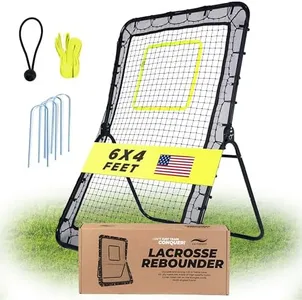
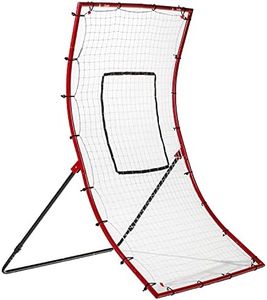
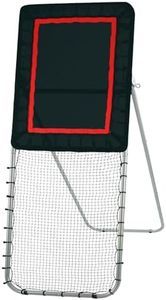
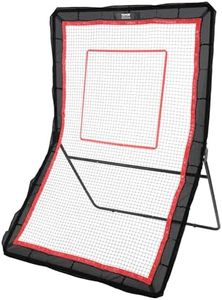
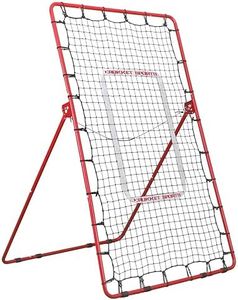
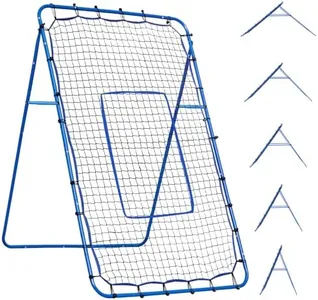
![YNSZAS 𝑵𝑬𝑾 𝑼𝑷𝑮𝑹𝑨𝑫𝑬 [2+1] Pitch Back Rebounder Net, 6 x 3.65 FT, Adjustable Bounce Back Return Board Net for Volleyball, Baseball, Softball, Lacrosse, Tennis, Throwing Partner, Trainer Gitfs](https://images-proxy.bestreviews.guide/7aUtjv6WrR0ZkO1-bFnIkdgbOI8=/0x300/https://m.media-amazon.com/images/I/51x7+wLpZ3L._AC_CX679_.jpg)
